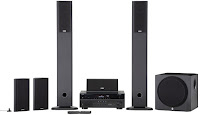
Who made the Wireless av sender(what is it)?
PAKITE is manufacture of wireless av sender,Located in shenzhen China, Over 8 years av sender produce experience, all of PAT series is our own design patent, 2.4/5.8GHz CE FCC Certificate and RoHS had passed.
Wireless av sender is for what?
Wireless av sender is for sharing digital single from one device to another device by wireless sharing, This technology no need to connect wifi, the wireless just send and receiver between transmitter and receiver.
How to use wireless av sender?
Just connect the transmitter part with the digital source, then connect receiver part with the tv or any other device for show the video, onece power on, it will be started work, easy to use and install.
How to choose the best one?
All the wireless device is according the use environment to choose the best suitable, but not the best one.since the 2.4GHz frequency band support strong penetrated ability, and 5.8GHz frequency band is support strong anti-interference, If use in the different floor or so many walls between transmitter and receiver,we will suggest PAT-360,PAT-260 or PAT-266 for you, if use in the same room or between room, any items is ok.
What the best advantage of AV Sender?
Example: the user have one set top box but not only one tv, and many tv in the different rooms and different floor.
PAKITE is manufacture of wireless av sender,Located in shenzhen China, Over 8 years av sender produce experience, all of PAT series is our own design patent, 2.4/5.8GHz CE FCC Certificate and RoHS had passed.
Wireless av sender is for what?
Wireless av sender is for sharing digital single from one device to another device by wireless sharing, This technology no need to connect wifi, the wireless just send and receiver between transmitter and receiver.
How to use wireless av sender?
Just connect the transmitter part with the digital source, then connect receiver part with the tv or any other device for show the video, onece power on, it will be started work, easy to use and install.
How to choose the best one?
All the wireless device is according the use environment to choose the best suitable, but not the best one.since the 2.4GHz frequency band support strong penetrated ability, and 5.8GHz frequency band is support strong anti-interference, If use in the different floor or so many walls between transmitter and receiver,we will suggest PAT-360,PAT-260 or PAT-266 for you, if use in the same room or between room, any items is ok.
What the best advantage of AV Sender?
Example: the user have one set top box but not only one tv, and many tv in the different rooms and different floor.
In this case,Typical: you have to buy many set top box and fix up cables from one room to another room, from first floor to another floor.
Now you have our product: whatever how many tv with one set top box is ok, one set top box connect one transmitter and each tv connect each receiver, no need to fix up any cable between different rooms and different floor.
If you are still confuse about wireless av sender, pls contact pawm611@pakite.net
Artical from: http://www.linkedin.com/pulse/some-skills-wireless-av-sender-lay-eily?trk=mp-reader-card
Recommend reading:
How to Avoid Distortion in A/V Transmitters

